originally posted at https://canmom.tumblr.com/post/659968...
Hello friends! In about two hours I’m going to be getting my second vaccination. Side effects might mess me up a bit so let’s try and get a writeup out the door nice and early.
Tonight, the plan is to visit one of the classic Madhouse films which I have so far neglected: Ninja Scroll. Yeah, with toku night it’s kind of a ninja-y week. So let’s make that the theme, since Rintaro also went and made a film about ninjas in the 80s, The Dagger of Kamui.
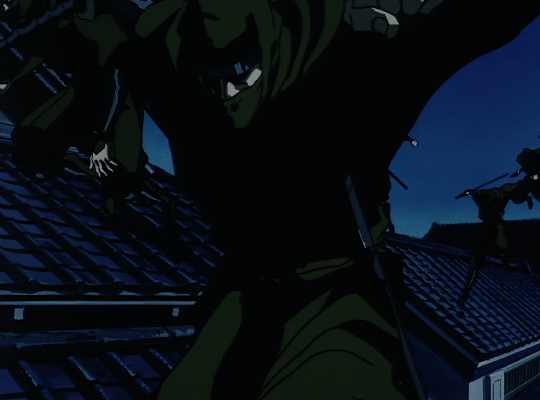
So, we did samurai; what were historical ninjas like?
Historically, a ninja (忍者) or shinobi (忍び) was simply an agent or mercenary employed by one of the daimyos of the sengoku (1400s-1500s) period to spy on his neighbours. Rather than all-black, they would have typically dressed as peasants, monks or merchants in order to pass beneath notice. And they probably wouldn’t have been called ninja (wiki):
Historically, the word ninja was not in common use, and a variety of regional colloquialisms evolved to describe what would later be dubbed ninja. Along with shinobi, these include monomi (“one who sees”), nokizaru (“macaque on the roof”), rappa (“ruffian”), kusa (“grass”) and Iga-mono (“one from Iga”).[6] In historical documents, shinobi is almost always used.
Typically, these shinobi would be recruited from lower non-samurai classes in the feudal order, in order to commit dirty deeds that the samurai would prefer not to be seen doing to each other - such as arson or hiding in the latrine to stab someone up the arse [nb that probably didn’t actually happen]. (As we saw in that previous post, the samurai had very few reservations about committing dirty deeds on non-samurai, but I guess it’s considered bad form to do that to fellow members of the landlord-soldier aristocracy.) The line between ninja and samurai was pretty murky though, with some famous figures like Hattori Hanzō acting as both.
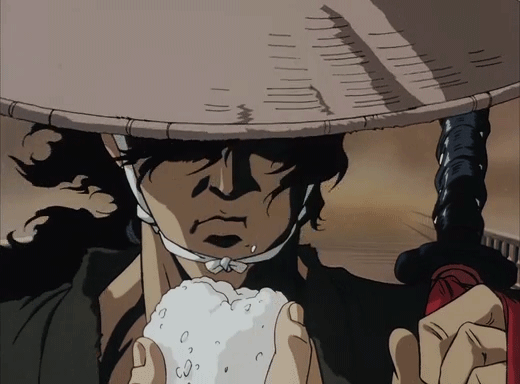
You can read a bit about their history here, though I can’t really speak to whether their sources are any good - almost all cite Stephen Turnbull - but it does seem there is reasonable attestation of two lineages of professional shinobi, namely the Iga and Kōga clans dispersed by Oda Nobunaga and hired as bodyguards by Tokugawa Ieyasu; some of the survivors went on to fight at Sekigahara on Tokugawa’s side. Which, given that Nobunaga and Ieyasu were ultimately the two surviving powers at the end of the sengoku period, probably explains a bit about how these clans became mythologised!
Heading into the Edo period, shinobi continued to exist as a social position (the bakufu officially permitted a daimyo with a sufficiently large estate to employ them), but since a lot less spycraft was necessary in a time of peace, they would mostly be employed as (for example) bodyguards or firefighters. The Kōga clan shows up again early on, helping to suppress the anti-government Christian rebels in the Shimabara rebellion. But after that point, they seem to have gradually disappeared as a social group; to some degree they were superseded by the government’s spy organisations like the oniwaban (founded in the 1700s).

So where does the mythologised, romantic ninja come from, with supernatural powers and improbable talents for stealth? This appears to date back to the Edo period as well, with ninjas seen in folk tales like Jiraiya Gōketsu Monogatari (which portrayed a shapeshifting ninja named Jiraiya who could turn into a toad, or possibly rode a giant toad, depending on which version you encounter).
The pop-culture ninja is a kind of elite acrobatic assassin who wears an all-black outfit. This outfit has been theorised to have derived from the kuroko (黒衣) stagehands in kabuki theatre, who wore a similar outfit to designate themselves as ‘not part of the story’, or else that they should be interpreted as animals etc. This tradition still holds up in at least some modern Japanese theatre - I recall in the YoRHa stage plays, the enemy robots would be represented by similarly black-clad stunt performers. Alternatively, the outfit may originate from black-clad bunraku puppeteers, who wear it for a similar reason.
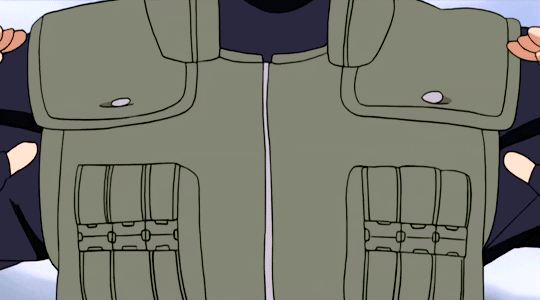
Outside of fiction, books like Bansenshūkai (1676) claim to compile the ninjutsu techniques of the Iga and Kōga clans, along with astrological advice, which began a long tradition of compiling more or less dubious ninja secrets. Ninjas were said to hang from kites (dubious) and use special shoes to walk on water (somehow even more dubious), or turn into animals (definitely real). One element of the mythology saw the ninjas adopting an esoteric Taoist-Buddhist practice called kuji-kiri where they would cast spells with special hand signs, which is nowadays best known as something from Naruto.
From there, I don’t have a great deal of info… but my best guess is that ninjas never really went out of fashion? Now and then someone would come up with a good aesthetic concept, and it would catch on as part of the ninja mythology. The charming Even A Monkey Can Draw Manga laments the decline of the 60s ninja manga, but as we’ll see tonight, by the 80s ninjas were popular once more, appearing frequently in games, tokusatsu and anime.
That brings us to tonight’s films! As we have seen on many prior Animation Nights, Madhouse in the 80s were delivering god tier chiaroscuro aesthetic in film after film. Well, some of their films were about ninjas!

First up, Ninja Scroll… We last saw a film of Yoshiaki Kawajiri on Animation Night 25, with the incredibly stylish Vampire Hunter D: Bloodlust; you may also recall his sequence The Running Man in Neo Tokyo on the very early days of Animation Night, in which the racecar driver ascends to a higher plane. Or maybe the sequence Program from The Animatrix showing a starkly lit fight on top of a simulated feudal Japanese castle. He’s also known for horny, gory cyberpunk like Demon City Shinjuku and Wicked City, which we may yet watch at some point.
If there’s one thing that unites all these works it’s that high contrast, chiaroscuro look and a fantastic taste for strong imagery (though it sure helps to have Yoshitaka Amano on hand to design characters lmao). Kawajiri is one of the really old guard of anime, working at Mushi Productions under Osamu Tezuka from his high school graduation in 1968. In the 70s, he was part of the group of ex-Mushi Pro animators who founded Madhouse; there, he gradually worked his way up, first as an animation director and then, in 1984, getting the chance to direct Lensman: Secret of the Lens.
With his foot in the door, his interest turned to darker material: first The Running Man, then a 35-minute version of Wicked City, which impressed everyone sufficiently that he got to make it into a full film. This success was followed by whole lot of films in the late 80s and early 90s, and he became one of Madhouse’s most popular directors.
Incredibly, he’s still going at 70 - still at Madhouse no less! In 2019, he provided boards for Ufotable’s Demon Slayer - though nowadays he is apparently known more for getting his storyboards done very quickly than making genre-defining works like the above.
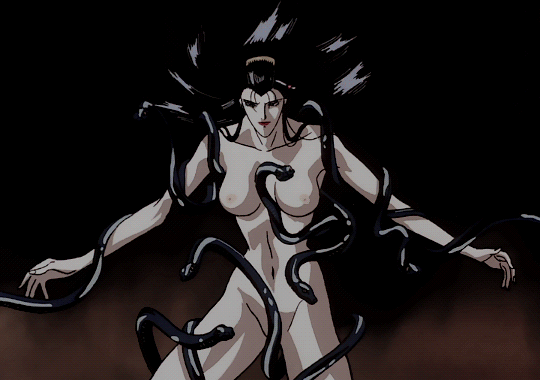
Ninja Scroll (1993) is one of his most famous works, and sees him head to jidaigeki territory… though definitely not without fantasy elements! Set in the Edo period, it tells the story of three ninjas who each run afoul of the pompously titled ‘Shogun of the Dark’, a member of the Toyotomi family (who were some of the more successful warlords in the Sengoku period). This particular Toyotomi aspires to overthrow the Tokugawa government, to which end he has hired a clan called the Yamashiro to mine gold and buy foreign weapons.
Sound complicated? Ultimately that’s just setup: the Yamashiro employ a team of eight supernatural ninjas called the Eight Devils of Kimon. Our protagonist Jubei is a mercenary, formerly one of the Yamashiro himself; he encounters the Devils when he interrupts one of them raping deuteragonist Kagero. His reward for this intervention is to be blackmailed by a government spy, Daguero, into tracking down and killing the other seven Devils. Along the way there’s a lot of poisoning shenanigans…
And yeah, like many edgy anime films of its era, I get the impression this film is not shy about depicting sexual violence on screen. As far as I can tell from the plot summary, that part in the opening is the only instance in this film but, you know, don’t let it surprise you!
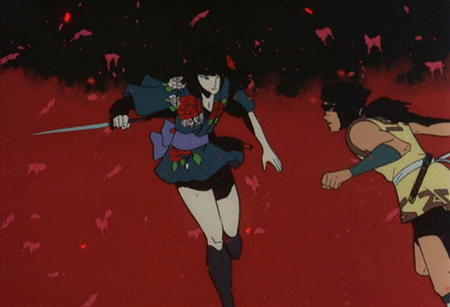
Our second (well, maybe first…) film, The Dagger of Kamui (1985), is another Madhouse joint, directed Rintarō (Hayashi Shigeyuki, but he did all his work under the pseudonym) - another renowned director whose work we last encountered back on Animation Night 53 with the remarkable Metropolis and on no. 62 with the fascinating Galaxy Express 999; he also directed the surreal Labyrinth Labyrinthos sequence which opened Neo Tokyo. He also worked with Peter Chung on Alexander Sekai (aka Reign: The Conqueror) which we must cover at some point.
Such examples would suggest that Rintaro’s habits are quirky science fiction with unique aesthetic touches, and yeah, that’s pretty much his thing - though he’s also made his own forays into grimdark near-hentai such as Doomed Megalopolis. Like Kawajiri, he was in at the start of Mushi Pro (after a prior job inbetweening on one of Toei’s earliest anime films), but he stepped into the director shoes much sooner with the fourth episode of Astro Boy. In the 70s, he was among the co-founders of Madhouse, with whom he made most of his best known films, though he remained technically a freelancer. Not quite sure how that works.
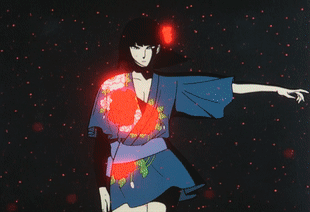
Anyway! The Dagger of Kamui adapts a series of novels by Tetsu Yano, tells the story of a Japanese-Ainu boy called Jiro, whose adoptive mother and sister are killed by a shinobi who leaves behind a mysterious dagger. Facing execution for supposed act of familicide, he flees, only to be adopted by a buddhist monk and member of the Oniwaban (Tokugawa government secret police) called Tenkai, who takes him to take revenge on the supposed killer and then trains him to be a ninja. But of course Tenkai is full of it, and later Jiro sets out to find his real family… and ends up spending a significant amount of time in America.
The film takes place in the mid 1800s, a very significant and grim period for the Ainu people. At the start of the century, the Ainu were still the majority population in the island now called Hokkaidō, and although there were many acts of violent suppression and forced assimilation by the Tokugawa government whenever Ainu rebelled against their authority, there was also extensive trade between Ainu and Japanese. But with the Meiji restoration in 1868, things took a turn for the much worse. The Meiji government would annex the island from the surviving Shogunate forces in 1869, and from that point carry out an extended program of cultural genocide against the Ainu.
And not to try and summarise the whole story (check wiki for that), but these historical events are interweaved throughout the story, with the final showdown taking place at that battle in 1869. So it’s going to be fascinating to see how it addresses such a complex and ugly history.
As a film, this looks to do some fascinating things with backlight animation, not to mention some very striking designs and gorgeous backgrounds. So I’m very excited to see where Rintaro takes us.
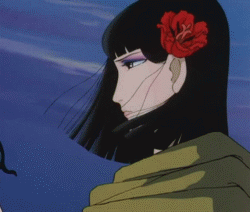
Of course, we’re just scratching the surface of ninja material here. @mogsk has helpfully advised me of some more recent ninja stories that are less grandiose and historical, like Colourful Ninja Iromaki. And the big one we can’t ignore here is, well, Naruto.
Honestly, if you’re into Naruto, you already know way more about it than I could find out in the time I have left to write this summary. Perhaps at some point in the future we can explore some more accessible parts of Naruto the way we did One Piece. To briefly summarise, in any case, Naruto is one of the really big Shōnen Jump manga series, which has been adapted into an equally sprawling anime. Like many shōnen adaptations, it is prone to pacing difficulties, but also a source of some extremely influential fight animation.

Naruto eschews a historical setting in favour of a fantasy world ruled by various ninja clans. Here, a ninja is not a feudal stealth specialist, but a kind of superpowered martial artist inspired by the more mythological ninjas, who can shapeshift and invoke various magic powers. The protagonist, Naruto Uzumaki, aspires to rise to a position of authority called a ‘Hokage’, but the impression I get is that this long term goal leads him to get embroiled in complicated ninja family politics. The upshot is… phew… ok, well, as the genre demands, he fights a lot of guys, and I’m pretty sure there’s some crossdressing, and there’s that one guy with the leg weights who everyone thinks is the shit? he has a boyfriend who’s kind of goth or something? help me here there’s so much of this!!!
Anyway, we’ll see if we have time and energy to dip our toe into Naruto - and if you have suggestions for a favourite episode that stands alone reasonably well, or a film that can be enjoyed by newcomers, I’m all ears. Possibly better to save it for a franchise-specific night somewhere down the line.
I’m sure there’s more to say about ninjas, but that will do for now; Animation Night 67 will be starting in 15 minutes or so at 7pm UK time over at twitch.tv/canmom! Until then… *disappears in a cloud of smoke, a small frog hops away…*
man ninja movies are really dumb lmao. but, what fun visuals on the way. loved the excess of backlight stuff in rintaro’s movie even if the plot was completely throw-darts-at-a-board. kind of interesting to see the evolution of hetero ‘manliness’ fantasies from the 80s to the 90s, even if it’s frustrating that all of these fantastic designs for the women ninjas are just people who die tragically on the hero’s quest.
dagger of kamui was a fascinating movie, but also a lot of of missed opportunities. don’t expect it to do much more than pile up the tropes! like, it could have made something of the parallel between the Ainu-Japanese hero and the Plains girl he meets in his geographically incomprehensible trip to Nevada, but instead she’s one of the most paper thin characters in the whole film - though also one of the very few women to actually survive it! and what do you even say about Sam’s plotline - the one Black character who, upon having his freedom bought by the protagonist (from a ship captain who is somehow still treated sympathetically), calls him “master” throughout the rest of the film (even when asked not to!)
but all that said, the sheer chaos of subplots and nonsensical twists (the villain has body doubles on every continent somehow!) piling up on each other made it very fun to watch, and there were some really cool stylistic touches that stand out as a bridge between 70s and 80s anime. classic rintaro, “this doesn’t really hang together but i love how it looks”.
ninja scroll… had some fantastic character designs for the eight enemy ninjas; overall however the aesthetic didn’t vibe nearly as hard as, say, Vampire Hunter D: Bloodlust. it’s very interesting to see the ways Madhouse use partial animation (you could sometimes see the cel borders), and their particular ways of drawing faces; there are many incredibly striking sequences but the story did not especially move me. glad to have finally seen it though!
anyway at the end we watched “colorful ninja iromaki” which is a very cute twenty minutes of silly character animation, check it out if you get a chance
Comments